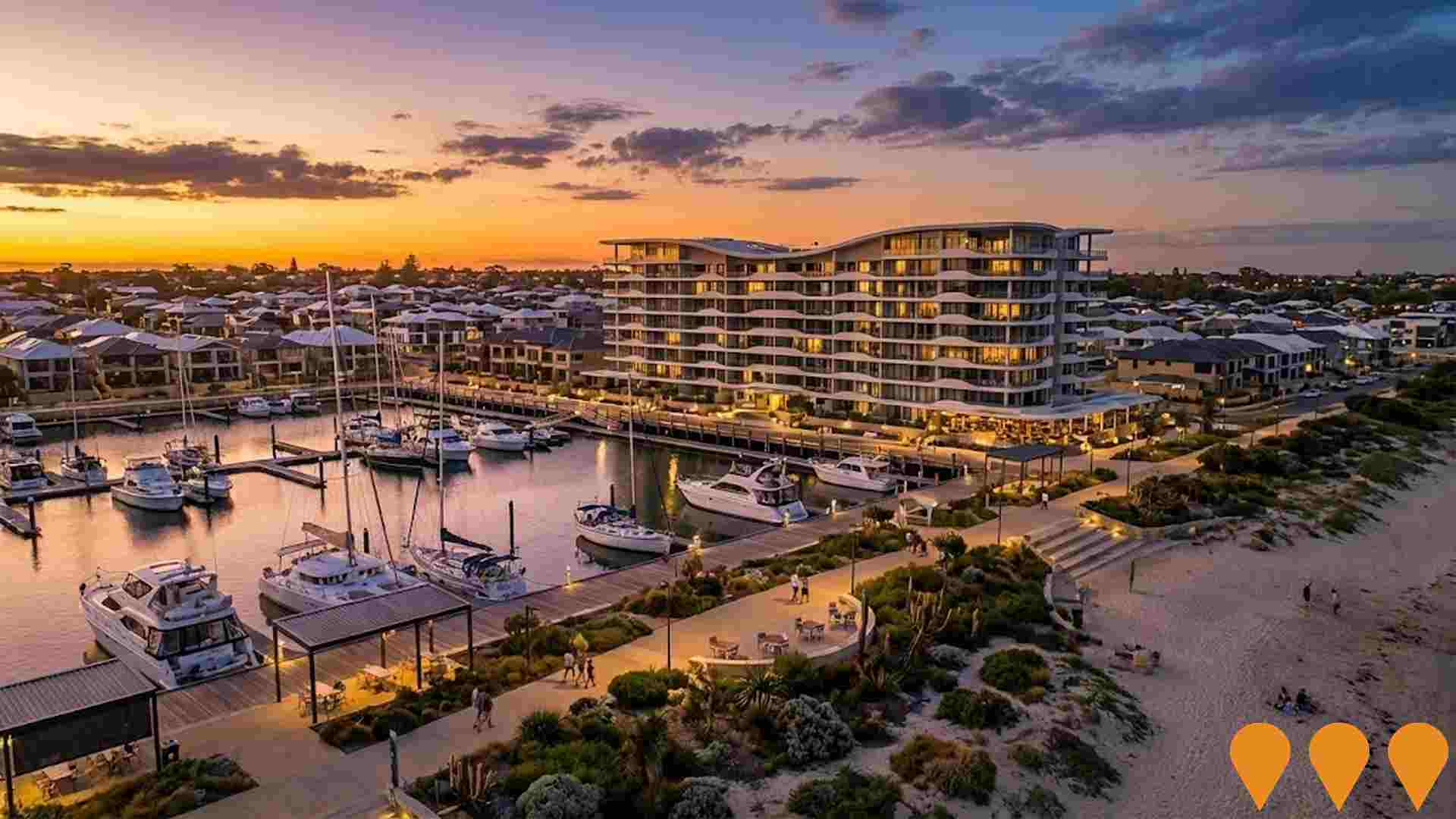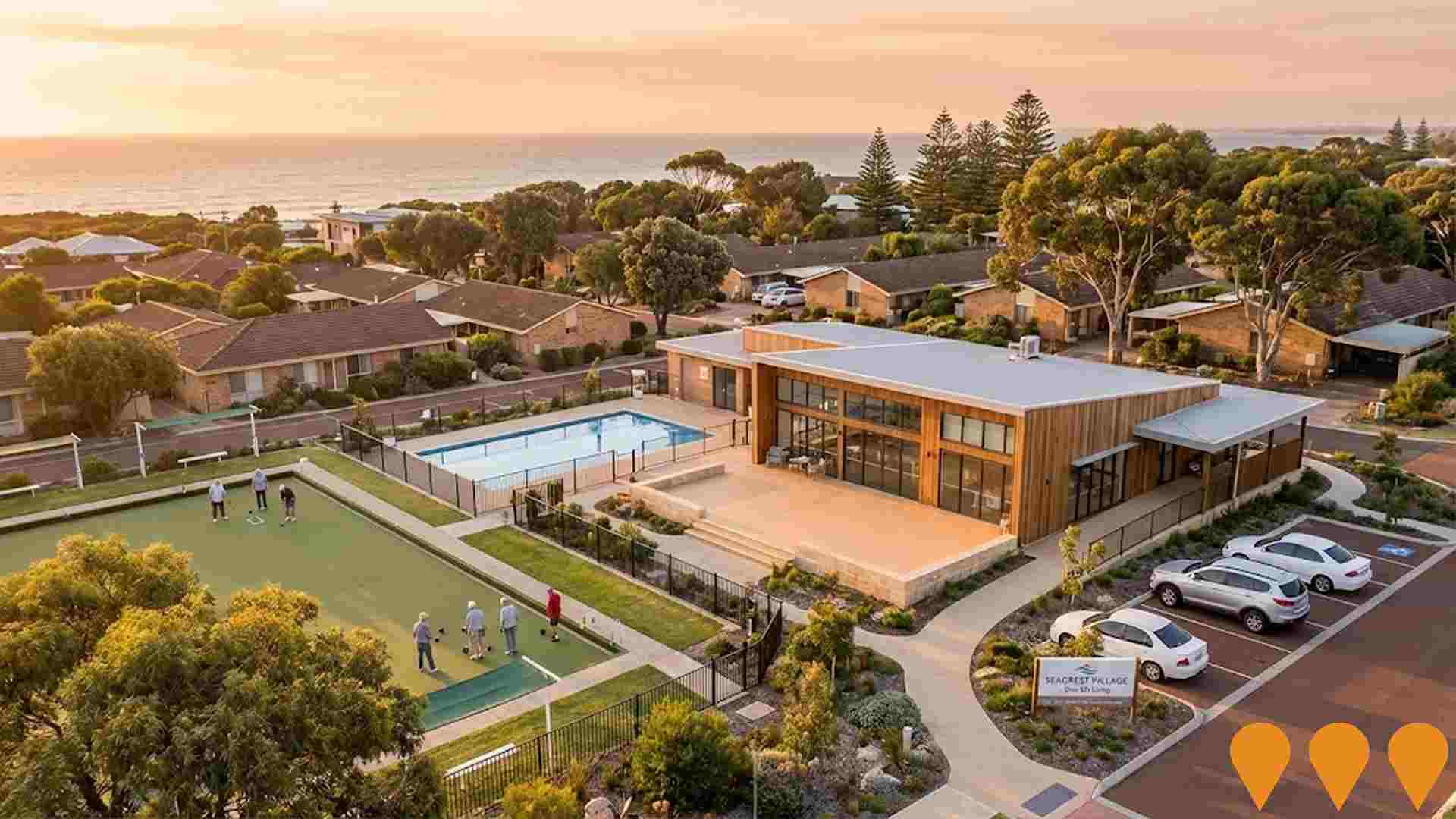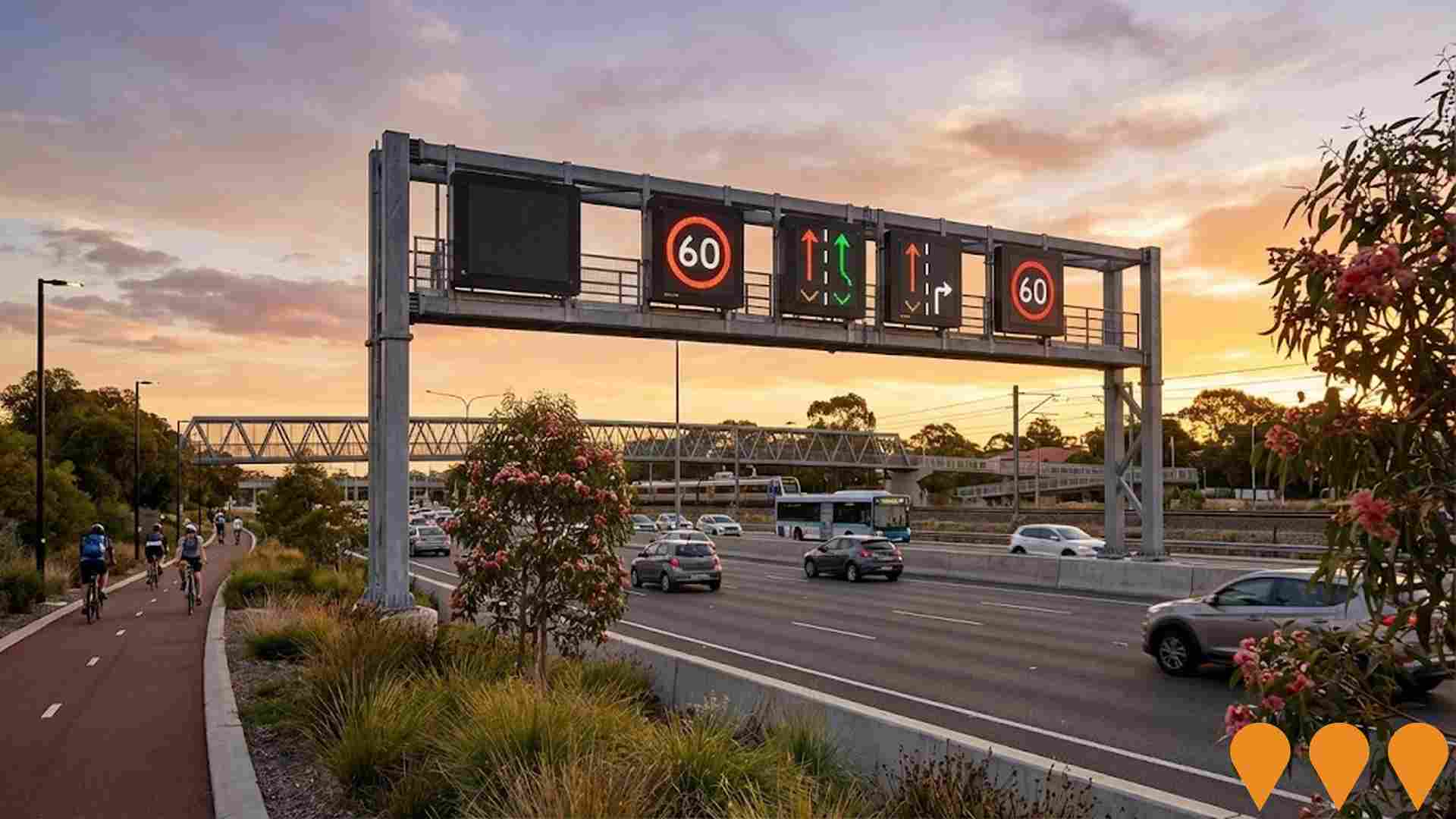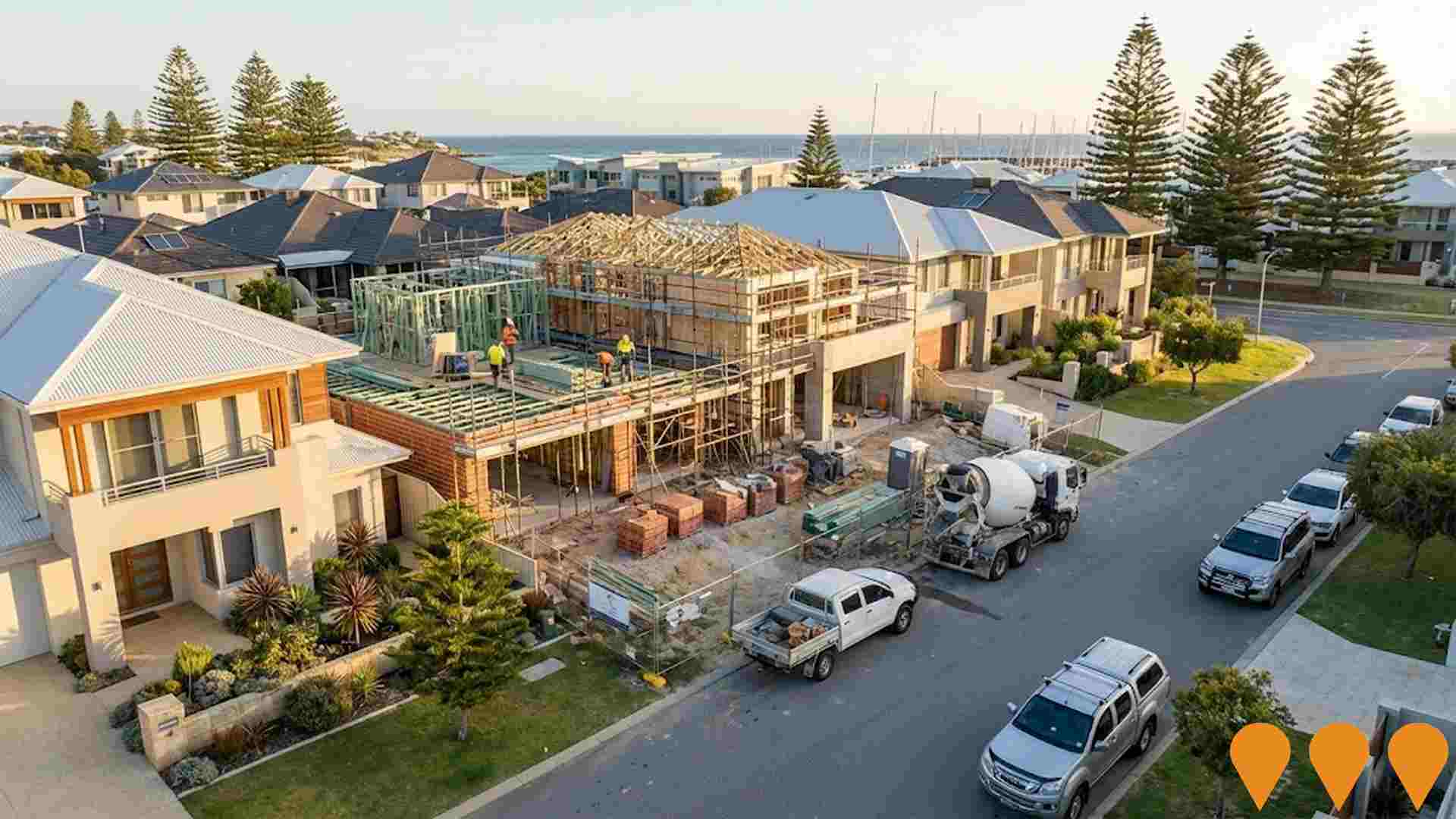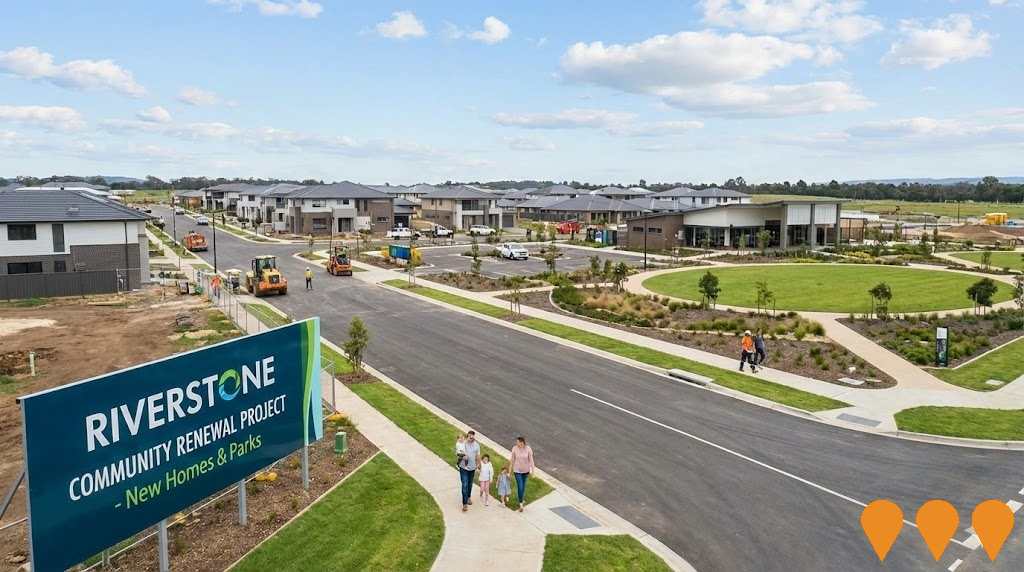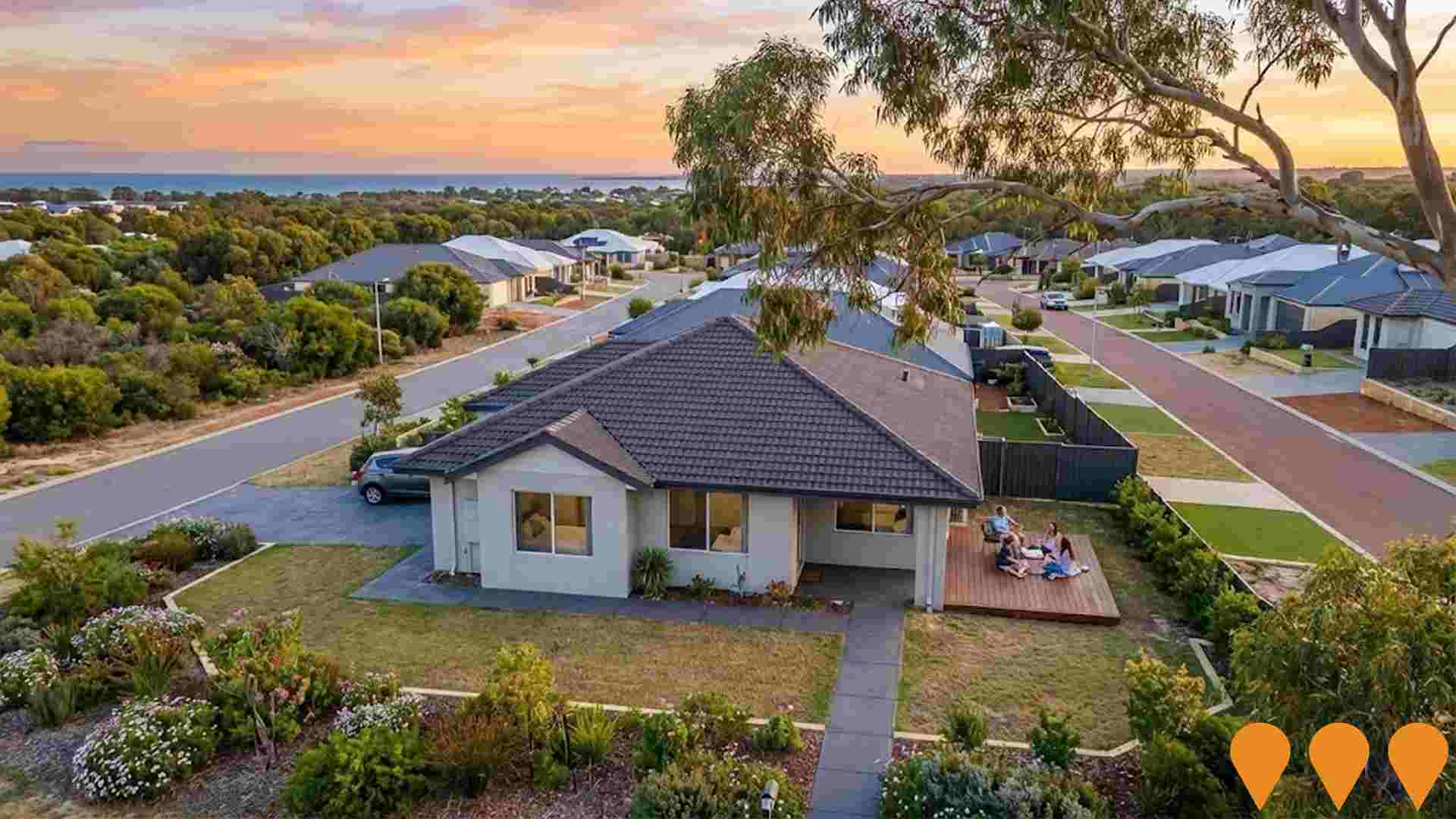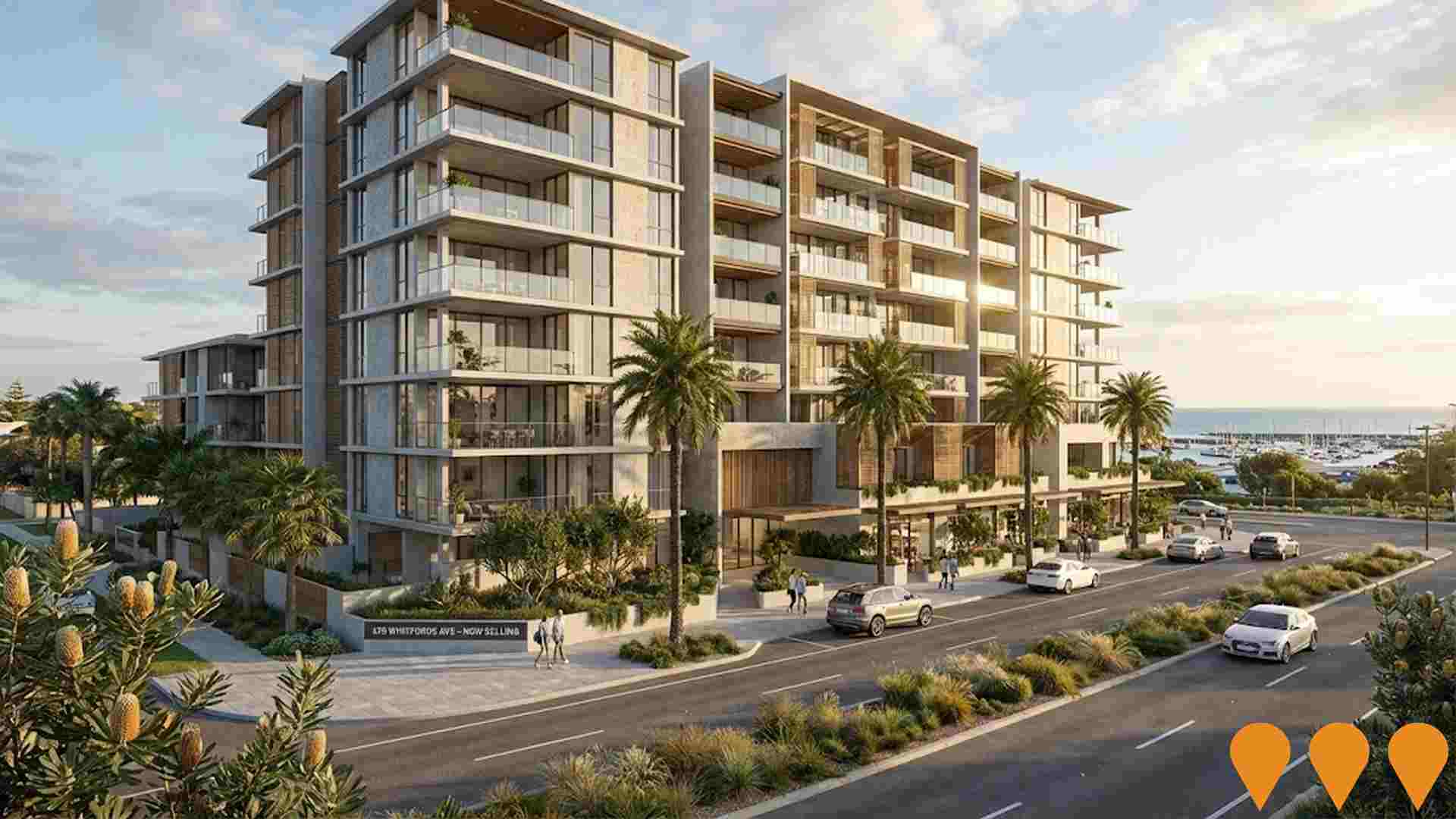Chart Color Schemes
est. as @ -- *
ABS ERP | -- people | --
2021 Census | -- people
Sales Activity
Curious about local property values? Filter the chart to assess the volume and appreciation (including resales) trends and regional comparisons, or scroll to the map below view this information at an individual property level.
Find a Recent Sale
Sales Detail
Population
An assessment of population growth drivers in Padbury reveals an overall ranking slightly below national averages considering recent, and medium term trends
Padbury's population, as of August 2025, is approximately 9,526. This figure represents a growth of 900 people since the 2021 Census, which recorded a population of 8,626. The increase is inferred from the estimated resident population of 9,519 in June 2024 and an additional 31 validated new addresses since the Census date. This results in a population density ratio of 1,579 persons per square kilometer, exceeding the average across national locations assessed by AreaSearch. Padbury's growth rate of 10.4% since the 2021 census surpassed both the national average (8.6%) and the SA3 area average, positioning it as a growth leader in the region. Natural growth contributed approximately 51.5% to overall population gains during recent periods.
AreaSearch uses ABS/Geoscience Australia projections for each SA2 area, released in 2024 with a base year of 2022. For areas not covered by this data and estimates post-2032, AreaSearch employs growth rates by age cohort provided by the ABS in its latest Greater Capital Region projections (released in 2023, based on 2022 data). Based on current demographic trends, Padbury is projected to experience above median population growth. By 2041, the area's population is expected to increase by 1,382 persons, marking a total rise of 14.4% over the seventeen-year period.
Frequently Asked Questions - Population
Development
Recent residential development output has been above average within Padbury when compared nationally
Padbury has recorded approximately 39 residential properties granted approval each year over the past five financial years, totalling 196 homes. In FY26 so far, 7 approvals have been recorded. On average, 4.4 people move to the area annually for each dwelling built between FY21 and FY25, indicating significant demand exceeding supply. New properties are constructed at an average cost of $401,000, aligning with regional trends.
This year has seen $1.2 million in commercial approvals, suggesting minimal commercial development activity. Compared to Greater Perth, Padbury shows moderately higher new home approvals, 38.0% above the regional average per person over the five-year period. The area maintains a traditional suburban character with 95.0% detached houses and 5.0% townhouses or apartments.
It has approximately 494 people per dwelling approval, reflecting an established area. Future projections estimate Padbury will add 1,375 residents by 2041. Building activity is keeping pace with growth projections, though buyer competition may intensify as the population grows.
Frequently Asked Questions - Development
Infrastructure
Padbury has moderate levels of nearby infrastructure activity, ranking in the 40thth percentile nationally
Changes to local infrastructure significantly impact an area's performance. AreaSearch has identified nine projects likely to affect the region. Notable initiatives include Regents Garden Padbury Residential Aged Care Facility, Harbour Rise Masterplanned Community (final stages), Chichester Park Skate Facility, and Whitfords Activity Centre Precinct (West) Redevelopment. The following list details those most relevant:.
Professional plan users can use the search below to filter and access additional projects.
INFRASTRUCTURE SEARCH
 Denotes AI-based impression for illustrative purposes only, not to be taken as definitive under any circumstances. Please follow links and conduct other investigations from the project's source for actual imagery. Developers and project owners wishing us to use original imagery please Contact Us and we will do so.
Denotes AI-based impression for illustrative purposes only, not to be taken as definitive under any circumstances. Please follow links and conduct other investigations from the project's source for actual imagery. Developers and project owners wishing us to use original imagery please Contact Us and we will do so.
Frequently Asked Questions - Infrastructure
Regents Garden Padbury Residential Aged Care Facility
A four-storey, 108-bed residential aged care facility developed by Regents Garden Group on a 5,195 square metre lot in Padbury. The facility will provide high-quality aged care services including 24/7 nursing care, respite care, palliative care, and dementia care. Part of Regents Garden's expansion of premium aged care facilities across Perth, featuring elegant design and comprehensive resident amenities.
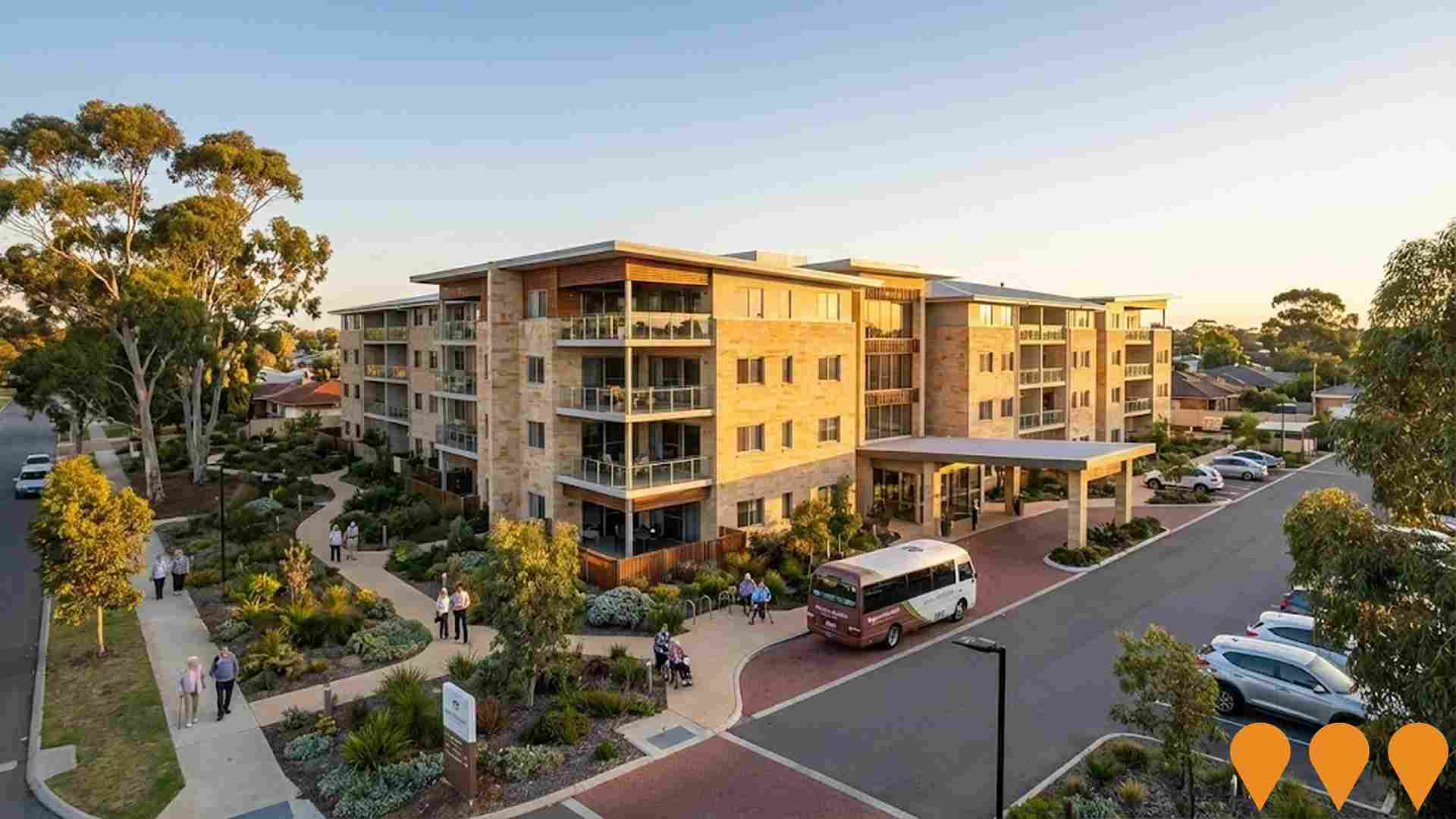
Whitfords Activity Centre Precinct (West) Redevelopment
Significant mixed-use precinct renewal immediately adjacent to Craigie including new residential apartments, retail expansion, and civic spaces as part of the City of Joondalup's long-term activity centre strategy.
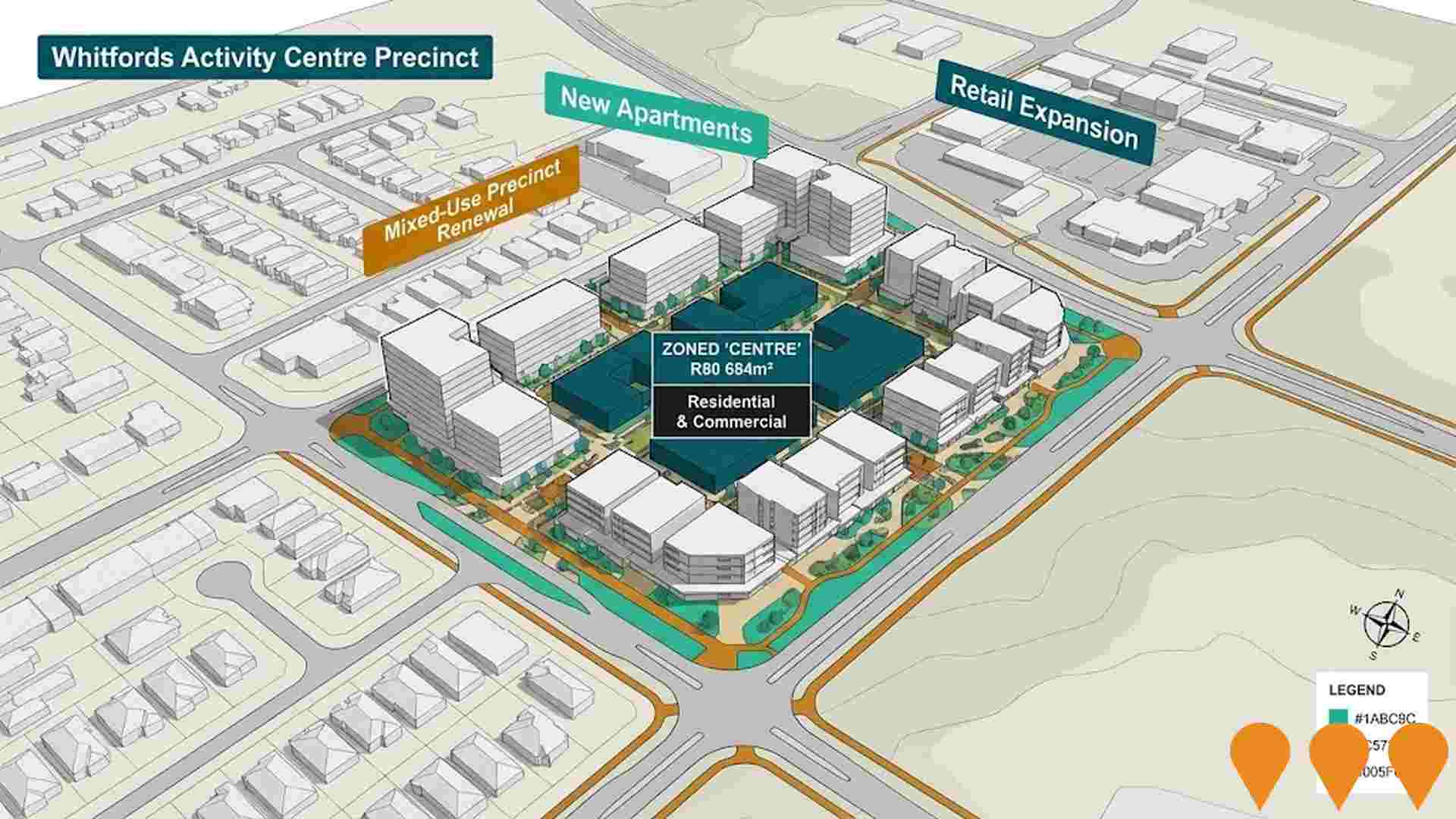
Ocean Reef Road Grade Separation
Grade separation project to eliminate traffic congestion at major intersection serving Ocean Reef Marina precinct. Features overpass construction, improved traffic flow, enhanced safety measures, and supporting infrastructure to accommodate growing traffic volumes in northern Perth coastal corridor and marina development.
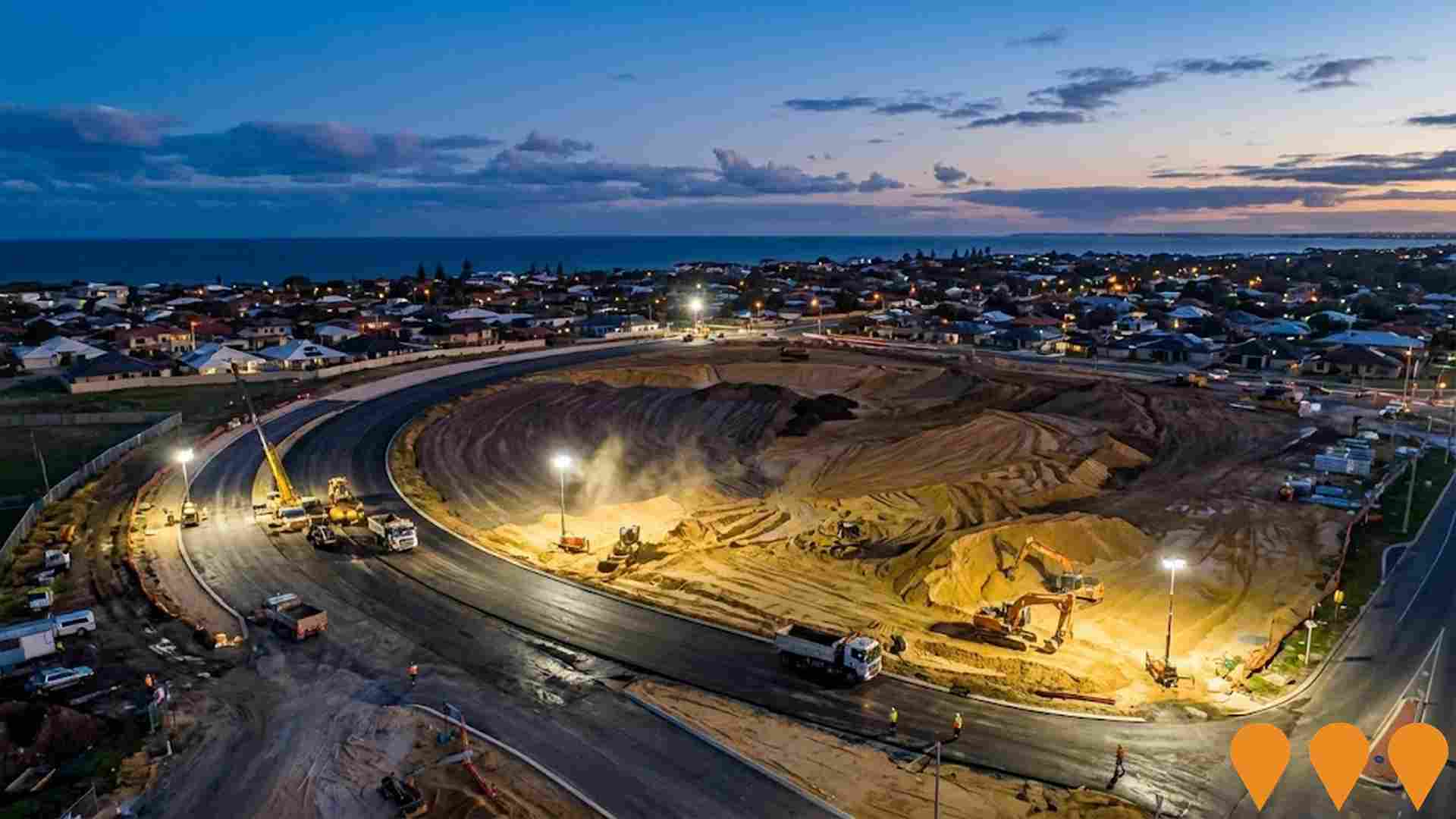
Chichester Park Skate Facility
Design and construction of an incidental-scale skate facility at Chichester Park to provide recreational opportunities for youth and the community. The project is an outcome of an investigation into a more suitable site after the proposed Woodvale Trotting Track location was deemed unfeasible. Tenders for design and construction closed in August 2025. The project has received an estimated $450,000 from the City of Joondalup's 2025/26 budget for skate and play facilities.
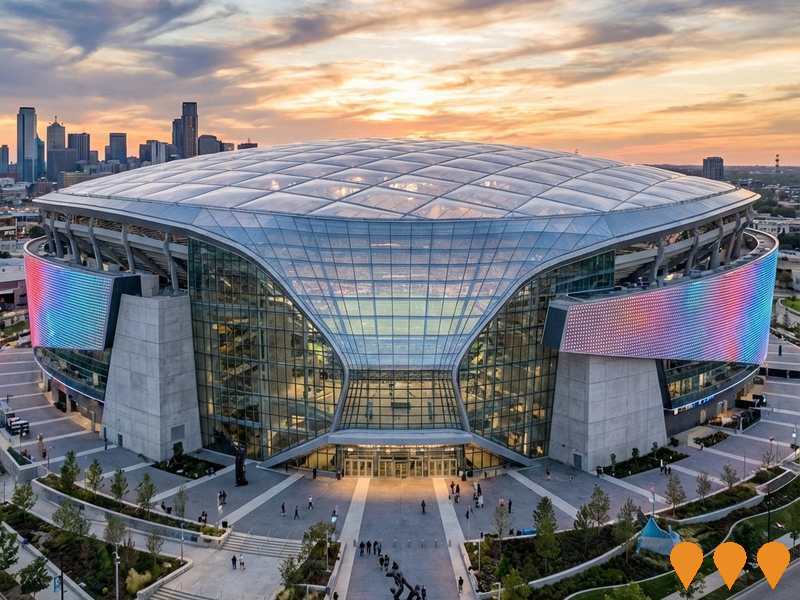
Hillarys Cycle Network Expansion
The Hillarys Cycle Network Expansion project delivers over 10 kilometers of shared paths in three sections to improve coastal connections for walking, wheeling, and riding in Perth's north-west. Section 1 (Hepburn Avenue, 2.6 km) was completed in early 2024, connecting Whitfords Avenue to Gibson Avenue. Section 2 (Coastal Section South, 5 km) commenced construction in late 2024, linking Hillarys Boat Harbour to North Mullaloo. Section 3 (Coastal Section North, 2.6 km) is scheduled for completion in mid-2026, connecting Ocean Reef Marina to Burns Beach. The project improves access to schools, beaches, marinas, and parklands with wider 4-meter red asphalt paths, enhanced bike parking, wayfinding signage, and safety improvements at road intersections.

Duffy House Activation Project
Restoration and commercial activation of the historic, State Heritage-listed Duffy House (built 1911-1913) and surrounding site in Woodvale. The project involves land transfer from the State Government to the City of Joondalup, which includes further restoration and a commercial activation through an Expression of Interest (EOI). The EOI closed in October 2024, with the aim to select an operator to enhance visitor engagement while honoring its cultural and historical significance. Proposed uses include a cafe/restaurant/wine bar, art gallery/studio, or museum/heritage display, along with wider site improvements for community use.
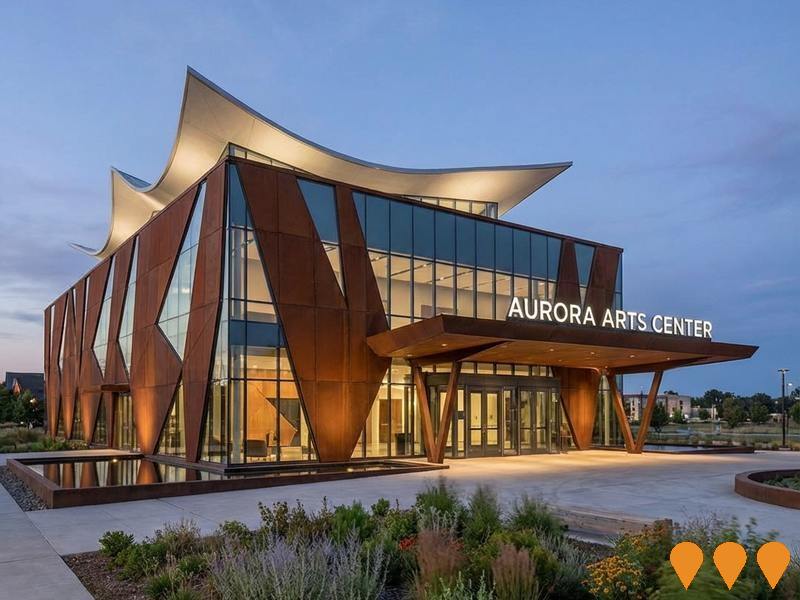
Hillarys Primary School Upgrades
State-of-the-art 22.8 million dollar major redevelopment of Hillarys Primary School delivered in three stages, providing 16 new general learning classrooms, two kindergarten classrooms, an inclusive education classroom, a new administration building, library, staffroom, hardcourts, additional parking, landscaping, outdoor teaching terraces and upgrades such as solar panels and digital connectivity. The project replaced facilities first opened in 1973 and was officially opened in October 2024 by the Cook Labor Government.
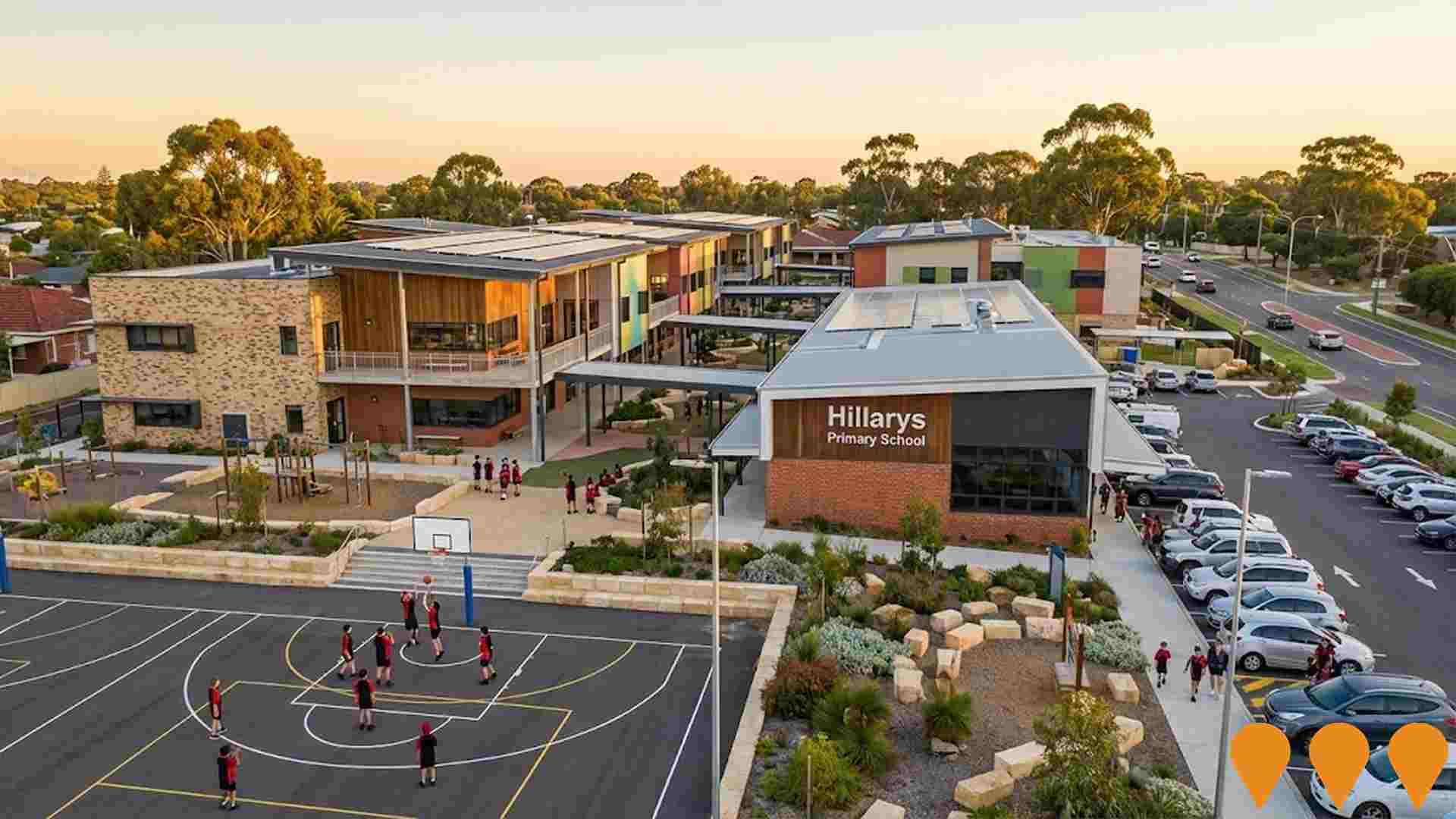
Chichester Park Community Sporting Facility Redevelopment
A $5.6 million redevelopment of the Chichester Park community sporting facility, completed in 2023. The two-storey facility features a medium-sized meeting room, four change rooms designed to better cater for female users, a referees change room, first aid room, modern kitchen, upgraded toilets, and storage areas. The project also included additional parking bays (57 total), a new barbecue and picnic area, underground drainage for the southern playing field, and enhanced accessibility features. The facility serves five sporting clubs including Kingsley Westside, Woodvale and WA Christian Football Association soccer clubs, plus Kingsley Woodvale Cricket and Junior Cricket clubs, with over 1,800 members. The park also features two active playing fields, floodlighting, an 18-basket disc golf course, and playground facilities.
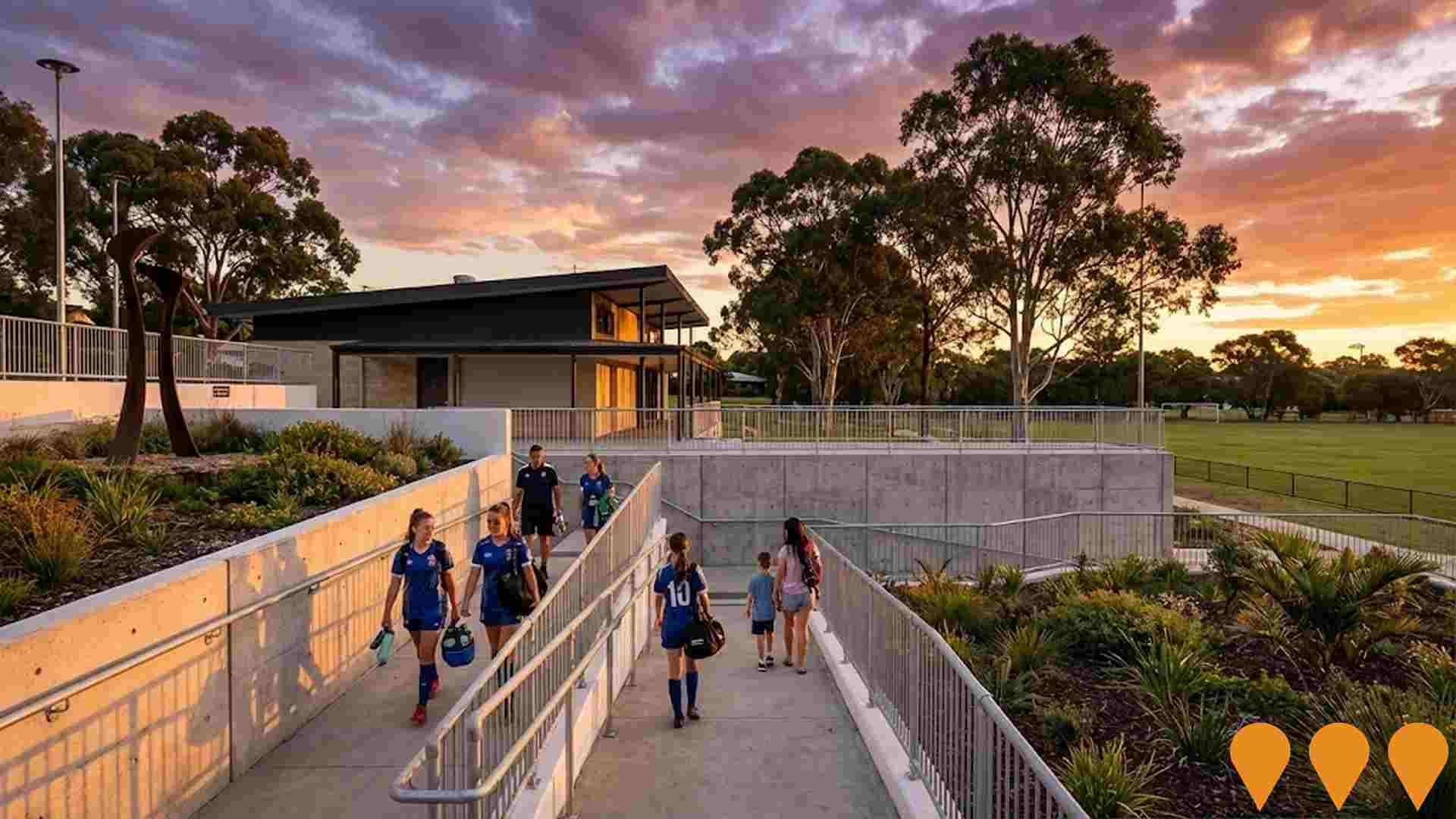
Employment
The labour market in Padbury shows considerable strength compared to most other Australian regions
Padbury has a well-educated workforce with essential services sectors well represented. The unemployment rate in Padbury is 2.9%, lower than Greater Perth's 3.9%.
Employment growth over the past year was estimated at 4.2%. As of June 2025, there are 5,316 residents employed, with an unemployment rate of 0.9% below Greater Perth's rate. Workforce participation in Padbury is 68.9%, compared to Greater Perth's 65.2%. Employment is concentrated in health care & social assistance, construction, and education & training.
Construction shows particularly strong specialization, with an employment share 1.5 times the regional level. Retail trade is under-represented, at 7.4% of Padbury's workforce compared to Greater Perth's 9.3%. The area appears to offer limited local employment opportunities, indicated by Census data comparing working population and resident population. From June 2024 to June 2025, employment increased by 4.2%, while labour force increased by 4.0%, causing the unemployment rate to fall by 0.2 percentage points. In contrast, Greater Perth experienced employment growth of 3.7% and labour force growth of 3.8%, with a rise in unemployment rate by 0.1 percentage points. Jobs and Skills Australia's national employment forecasts from May 2025 project national employment expansion at 6.6% over five years and 13.7% over ten years, but growth rates vary significantly between industry sectors. Applying these projections to Padbury's employment mix suggests local growth of approximately 6.5% over five years and 13.5% over ten years, based on a simple weighting extrapolation for illustrative purposes.
Frequently Asked Questions - Employment
Income
Income metrics indicate excellent economic conditions, with the area achieving higher performance than 75% of national locations assessed by AreaSearch
AreaSearch's latest postcode level ATO data for financial year 2022 shows that income in Padbury is among the highest in Australia, with a median assessed at $58,714 and an average income of $78,500. This contrasts with Greater Perth's figures of a median income of $58,380 and an average income of $78,020. Based on Wage Price Index growth of 14.2% since financial year 2022, current estimates would be approximately $67,051 (median) and $89,647 (average) as of September 2025. According to the 2021 Census figures, household, family, and personal incomes in Padbury cluster around the 70th percentile nationally. Distribution data shows that the $1,500 - 2,999 bracket dominates with 33.7% of residents (3,210 people), mirroring the metropolitan region where 32.0% occupy this bracket. Housing accounts for 14.4% of income while strong earnings rank residents within the 73rd percentile for disposable income and the area's SEIFA income ranking places it in the 7th decile.
Frequently Asked Questions - Income
Housing
Padbury is characterized by a predominantly suburban housing profile, with a higher proportion of rental properties than the broader region
The dwelling structure in Padbury, as per the latest Census evaluation, consisted of 92.3% houses and 7.6% other dwellings (semi-detached, apartments, 'other' dwellings). In contrast, Perth metro had 88.7% houses and 11.3% other dwellings. Home ownership in Padbury stood at 32.8%, with the rest of dwellings either mortgaged (50.4%) or rented (16.8%). The median monthly mortgage repayment was $2,000, lower than Perth metro's average of $2,080. The median weekly rent figure in Padbury was $390, compared to Perth metro's $400. Nationally, Padbury's mortgage repayments were higher at $2,000 versus the Australian average of $1,863, and rents were also higher at $390 compared to the national figure of $375.
Frequently Asked Questions - Housing
Household Composition
Padbury features high concentrations of family households, with a lower-than-average median household size
Family households account for 77.3% of all households, including 35.8% couples with children, 28.2% couples without children, and 12.1% single parent families. Non-family households make up the remaining 22.7%, with lone person households at 20.2% and group households comprising 2.4%. The median household size is 2.6 people, smaller than the Greater Perth average of 2.7.
Frequently Asked Questions - Households
Local Schools & Education
The educational profile of Padbury exceeds national averages, with above-average qualification levels and academic performance metrics
Tertiary education reaches 28.8% of residents aged 15+ in Padbury. Bachelor degrees lead at 20.6%, followed by postgraduate qualifications (4.9%) and graduate diplomas (3.3%). Trade and technical skills feature prominently, with 39.0% of residents aged 15+ holding vocational credentials – advanced diplomas (12.4%) and certificates (26.6%).
Educational participation is notably high, with 28.2% of residents currently enrolled in formal education, including 10.4% in primary education, 7.6% in secondary education, and 4.4% pursuing tertiary education. A total of 8 schools operate within Padbury, educating approximately 1,649 students. The area demonstrates typical Australian school conditions with balanced educational opportunities (ICSEA: 1046). Education provision is balanced with 7 primary and 1 secondary school serving distinct age groups. Note: where schools show 'n/a' for enrolments please refer to parent campus.
Frequently Asked Questions - Education
Schools Detail
Nearby Services & Amenities
Transport
Transport servicing is good compared to other areas nationally based on assessment of service frequency, route connectivity and accessibility
Padbury has 52 active public transport stops, all of which are bus stops. These stops are served by 9 different routes that collectively facilitate 1,817 weekly passenger trips. The average distance from residents to the nearest transport stop is 197 meters, indicating excellent accessibility.
All routes combined operate an average of 259 trips per day, translating to approximately 34 weekly trips per individual stop.
Frequently Asked Questions - Transport
Transport Stops Detail
Health
The level of general health in Padbury is notably higher than the national average with both young and old age cohorts seeing low prevalence of common health conditions
Padbury shows superior health outcomes, with both younger and older age groups experiencing low incidence of common health conditions.
Private health insurance coverage stands at approximately 59% (5,601 people). Mental health issues and asthma are the most prevalent medical conditions, affecting 7.4 and 7.3% of residents respectively. Notably, 71.9% of Padbury residents report no medical ailments, compared to 71.5% across Greater Perth. The area has a lower proportion of seniors aged 65 and over at 17.1% (1,630 people), compared to Greater Perth's 20.1%. Despite this, health outcomes among seniors in Padbury are above average, aligning with the general population's health profile.
Frequently Asked Questions - Health
Cultural Diversity
Padbury was found to be more culturally diverse than the vast majority of local markets in Australia, upon assessment of a range of language and cultural background related metrics
Padbury's cultural diversity is notable, with 11.2% of its residents speaking a language other than English at home and 32.8% born overseas. Christianity is the predominant religion in Padbury, accounting for 43.5% of the population. However, Islam's representation is higher than average, making up 1.3% compared to Greater Perth's 0.9%.
The top three ancestry groups are English (31.8%), Australian (24.3%), and Irish (9.2%). Some ethnic groups show significant differences: Welsh residents make up 0.9%, South African 0.9%, and New Zealand 1.0%, compared to regional percentages of 1.1%, 1.8%, and 0.9% respectively.
Frequently Asked Questions - Diversity
Age
Padbury's population is slightly younger than the national pattern
The median age in Padbury is close to Greater Perth's average of 37 years and equivalent to the Australian median of 38 years. Compared to Greater Perth, Padbury has a higher proportion of residents aged 35-44 (17.5%) but fewer residents aged 25-34 (11.3%). Between the 2016 Census and the 2021 Census, the population aged 75-84 grew from 4.5% to 6.0%, while the 35-44 age group increased from 16.3% to 17.5%. Conversely, the 25-34 age group declined from 13.1% to 11.3%, and the 55-64 age group dropped from 11.2% to 9.5%. By 2041, Padbury's age composition is expected to shift notably. The 75-84 age group will grow by 78% (440 people), reaching 1,007 from 566. Meanwhile, both the 0-4 and 35-44 age groups are projected to decrease in numbers.
